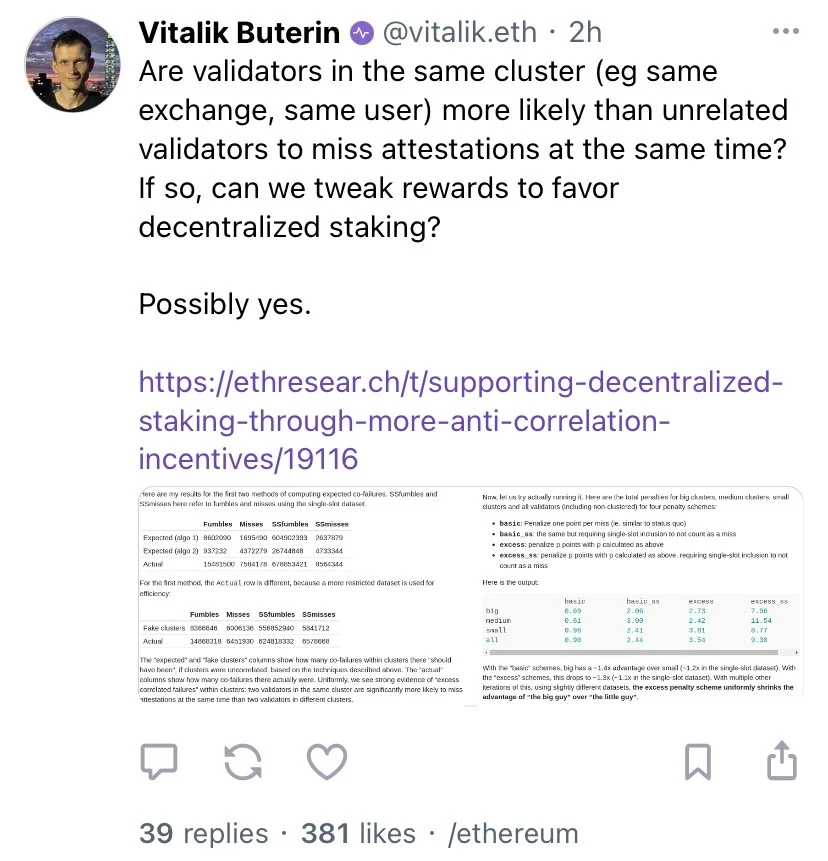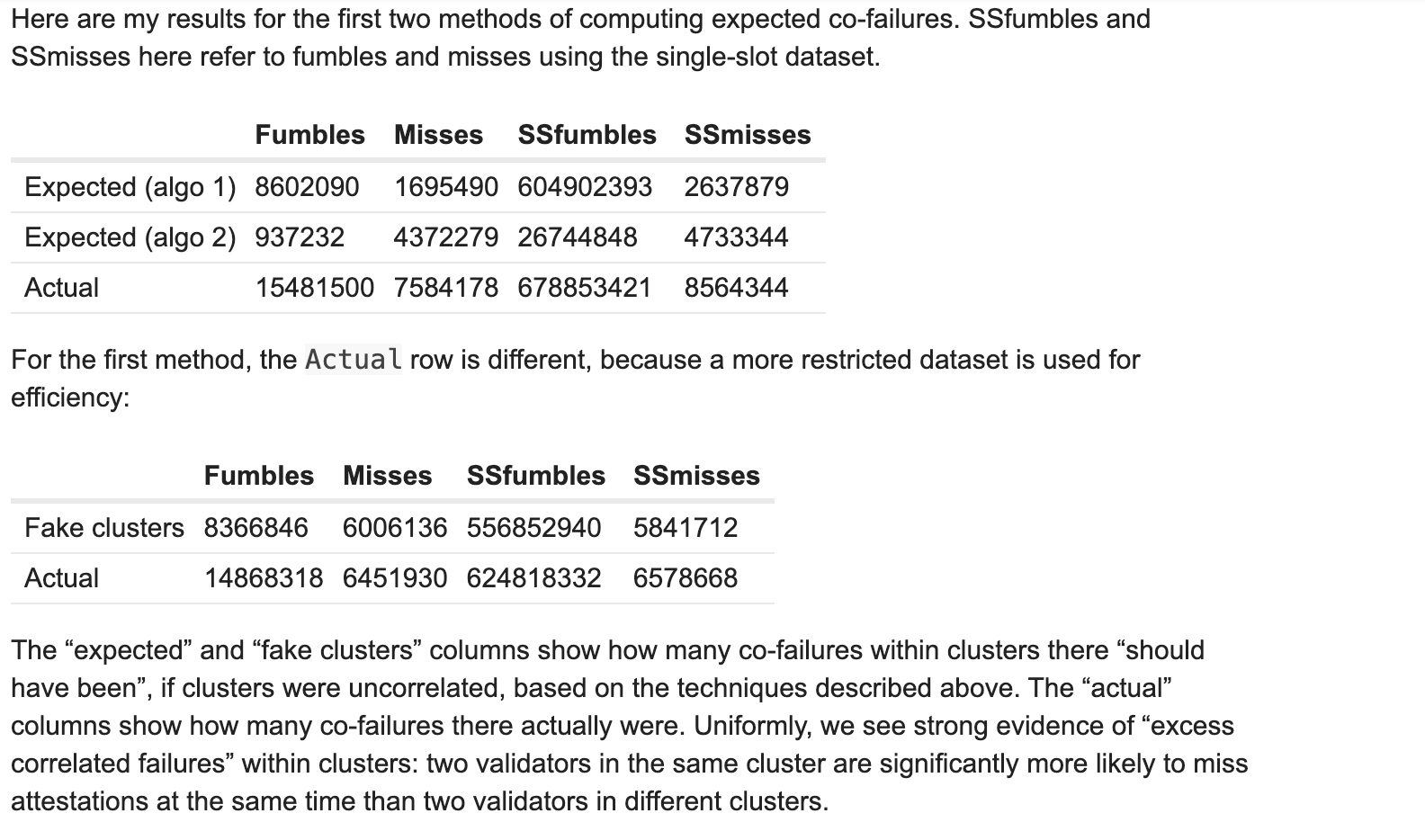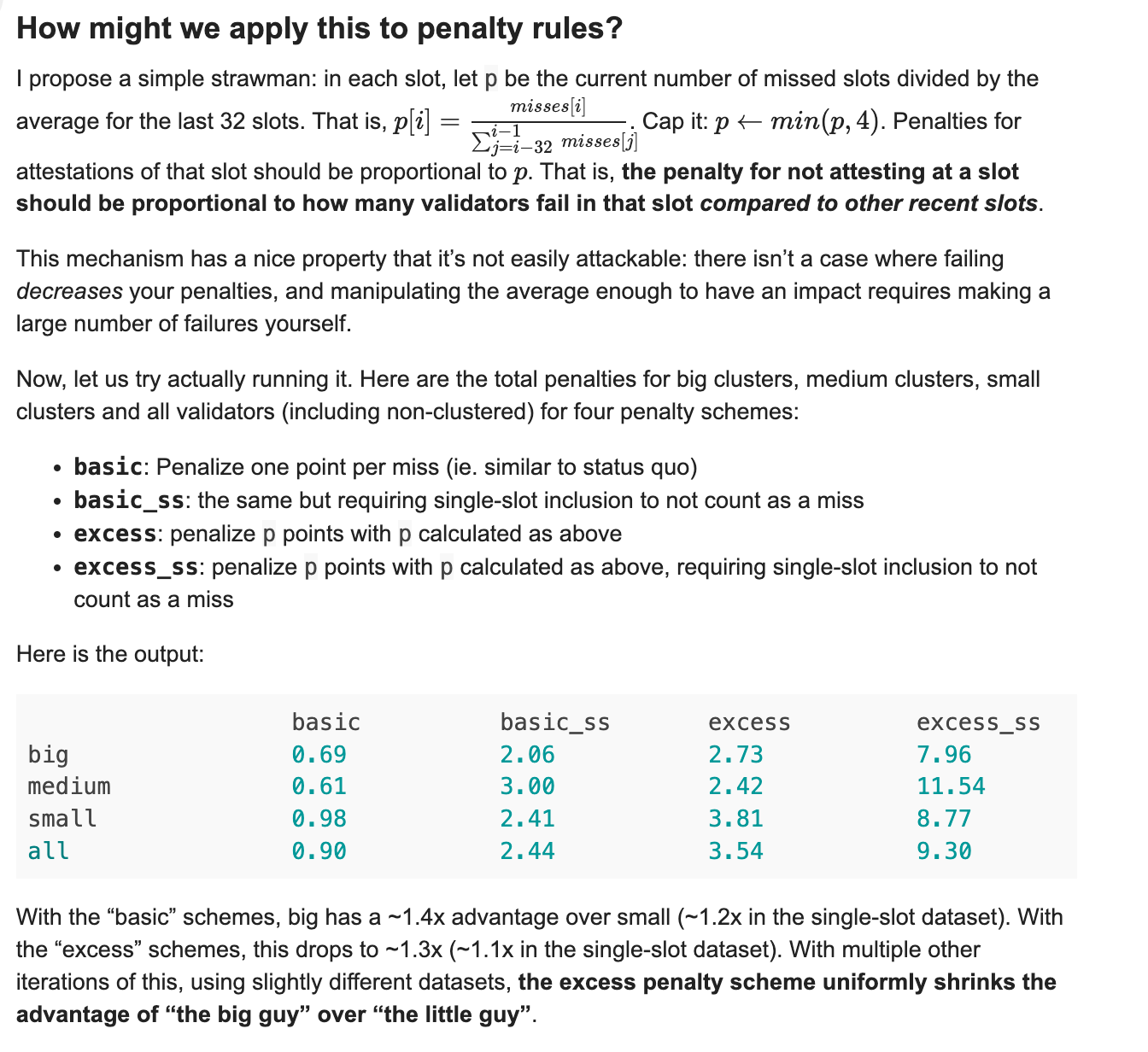 web3.0
web3.0
 V God proposes a new plan: Redesign the PoS penalty mechanism to solve the centralization concerns of Ethereum
V God proposes a new plan: Redesign the PoS penalty mechanism to solve the centralization concerns of Ethereum
V God proposes a new plan: Redesign the PoS penalty mechanism to solve the centralization concerns of Ethereum

The centralization risk of Ethereum PoS staking has always been the focus of Vitalik Buterin. At the recent ETHTaipei event, he proposed the concept of “Rainbow Staking”, which aims to increase the participation of independent stakers to mitigate the centralization risk faced by the Ethereum network. This concept aims to make the network more decentralized by promoting wider participation. Vitalik Buterin believes that by encouraging more people to participate in staking, the security and stability of the network can be increased and the reliance on a few large holders can be reduced. This move is expected to make the Ethereum network more decentralized and robust.
Earlier today, Vitalik posted on Farcaster to discuss this issue again: Are validators in the same cluster (such as the same exchange, the same user) more likely to miss the certificate at the same time than unrelated validators? If so, can we adjust rewards to support decentralized staking? Probably yes.

Vitalik proposed to encourage the decentralization of Ethereum through "punishment-related behaviors"
At the same time, Vitalik published an article titled New article on "Strengthening Decentralized Staking: Implementing More Anti-Correlation Incentives". He proposed a new strategy aimed at driving better decentralization by “rewarding non-relevant behavior.”
If a validator behaves inappropriately, whether accidentally or intentionally, they will face appropriate penalties. The severity of this penalty will increase with the number of other validators misbehaving simultaneously, as measured by the total amount of ether they hold. This mechanism is designed to incentivize validators to abide by the rules and ensure the security and stability of the entire system.
To address common failure scenarios, such as the "missed proof" errors occasionally made by validators, Vitalik proposes two clearly defined scenarios: (i) network failure during normal operations, and (ii) Offline or long-term failure.
(i)Fumbles: When the verifier misses the proof in the current epoch, but proved correctly in the previous epoch
(ii)Misses : When a validator misses a proof in the current epoch and also missed a proof in the previous epoch
The probability of a validator in the cluster missing a proof is higher than that of an individual validator
The figure below shows Vitalik calculating the expected and actual results of common failures, which includes data for "fumbles" and "misses", as well as "SSfumbles" and "SSmisses" specifically for a single time period (slot) data set.
The results show that two validators in the same cluster are significantly more likely to miss the proof at the same time than two validators in different clusters. This answers the question Vitalik asked on Farcaster above, so perhaps we can adjust rewards to support decentralized staking.

The penalty is proportional to the number of validators who missed the proof
Next, Vitalik proposed the concept of a penalty rule to apply to decentralized staking scene.
“The “excess” penalty scheme is based on a simple assumption: in each period (slot), if the number of validators who miss the certification exceeds the average value in the past period, then all validators in that period will The punishment should be increased. ”
Vitalik showed the impact of four different penalty schemes on large, medium, small and all validators. The results show that the “excess” penalty scheme can reduce the advantage of large groups over small groups, thus promoting greater fairness. and a decentralized staking system.

This proposal is currently under continuous discussion, but judging from Vitalik’s multiple possible solutions, Ethereum is indeed gradually facing the problems that may be caused by over-centralization of ETH staking. .
The above is the detailed content of V God proposes a new plan: Redesign the PoS penalty mechanism to solve the centralization concerns of Ethereum. For more information, please follow other related articles on the PHP Chinese website!

Hot AI Tools

Undresser.AI Undress
AI-powered app for creating realistic nude photos

AI Clothes Remover
Online AI tool for removing clothes from photos.

Undress AI Tool
Undress images for free

Clothoff.io
AI clothes remover

Video Face Swap
Swap faces in any video effortlessly with our completely free AI face swap tool!

Hot Article

Hot Tools

Notepad++7.3.1
Easy-to-use and free code editor

SublimeText3 Chinese version
Chinese version, very easy to use

Zend Studio 13.0.1
Powerful PHP integrated development environment

Dreamweaver CS6
Visual web development tools

SublimeText3 Mac version
God-level code editing software (SublimeText3)

Hot Topics
 Bitcoin price today
Apr 28, 2025 pm 07:39 PM
Bitcoin price today
Apr 28, 2025 pm 07:39 PM
Bitcoin’s price fluctuations today are affected by many factors such as macroeconomics, policies, and market sentiment. Investors need to pay attention to technical and fundamental analysis to make informed decisions.
 What currency does Ripple (XRP currency) belong to? Detailed tutorial for beginners
Apr 28, 2025 pm 07:57 PM
What currency does Ripple (XRP currency) belong to? Detailed tutorial for beginners
Apr 28, 2025 pm 07:57 PM
Created by Ripple, Ripple is used for cross-border payments, which are fast and low-cost and suitable for small transaction payments. After registering a wallet and exchange, purchase and storage can be made.
 What are the top ten virtual currency trading apps? The latest digital currency exchange rankings
Apr 28, 2025 pm 08:03 PM
What are the top ten virtual currency trading apps? The latest digital currency exchange rankings
Apr 28, 2025 pm 08:03 PM
The top ten digital currency exchanges such as Binance, OKX, gate.io have improved their systems, efficient diversified transactions and strict security measures.
 Which of the top ten currency trading platforms in the world are the latest version of the top ten currency trading platforms
Apr 28, 2025 pm 08:09 PM
Which of the top ten currency trading platforms in the world are the latest version of the top ten currency trading platforms
Apr 28, 2025 pm 08:09 PM
The top ten cryptocurrency trading platforms in the world include Binance, OKX, Gate.io, Coinbase, Kraken, Huobi Global, Bitfinex, Bittrex, KuCoin and Poloniex, all of which provide a variety of trading methods and powerful security measures.
 Spot King Transformation Note: How to layout the next generation of on-chain ecosystem with Gate.io MeMebox 2.0?
Apr 28, 2025 pm 03:36 PM
Spot King Transformation Note: How to layout the next generation of on-chain ecosystem with Gate.io MeMebox 2.0?
Apr 28, 2025 pm 03:36 PM
Gate.io has achieved the transformation from spot trading to on-chain ecosystem through MeMebox 2.0. 1) Build a cross-chain infrastructure and support the interoperability of 12 main chains; 2) Create a DeFi application ecosystem and provide one-stop services; 3) Implement incentive mechanisms and reconstruct value allocation.
 How much is Bitcoin worth
Apr 28, 2025 pm 07:42 PM
How much is Bitcoin worth
Apr 28, 2025 pm 07:42 PM
Bitcoin’s price ranges from $20,000 to $30,000. 1. Bitcoin’s price has fluctuated dramatically since 2009, reaching nearly $20,000 in 2017 and nearly $60,000 in 2021. 2. Prices are affected by factors such as market demand, supply, and macroeconomic environment. 3. Get real-time prices through exchanges, mobile apps and websites. 4. Bitcoin price is highly volatile, driven by market sentiment and external factors. 5. It has a certain relationship with traditional financial markets and is affected by global stock markets, the strength of the US dollar, etc. 6. The long-term trend is bullish, but risks need to be assessed with caution.
 Which of the top ten currency trading platforms in the world are among the top ten currency trading platforms in 2025
Apr 28, 2025 pm 08:12 PM
Which of the top ten currency trading platforms in the world are among the top ten currency trading platforms in 2025
Apr 28, 2025 pm 08:12 PM
The top ten cryptocurrency exchanges in the world in 2025 include Binance, OKX, Gate.io, Coinbase, Kraken, Huobi, Bitfinex, KuCoin, Bittrex and Poloniex, all of which are known for their high trading volume and security.
 Recommended reliable digital currency trading platforms. Top 10 digital currency exchanges in the world. 2025
Apr 28, 2025 pm 04:30 PM
Recommended reliable digital currency trading platforms. Top 10 digital currency exchanges in the world. 2025
Apr 28, 2025 pm 04:30 PM
Recommended reliable digital currency trading platforms: 1. OKX, 2. Binance, 3. Coinbase, 4. Kraken, 5. Huobi, 6. KuCoin, 7. Bitfinex, 8. Gemini, 9. Bitstamp, 10. Poloniex, these platforms are known for their security, user experience and diverse functions, suitable for users at different levels of digital currency transactions




